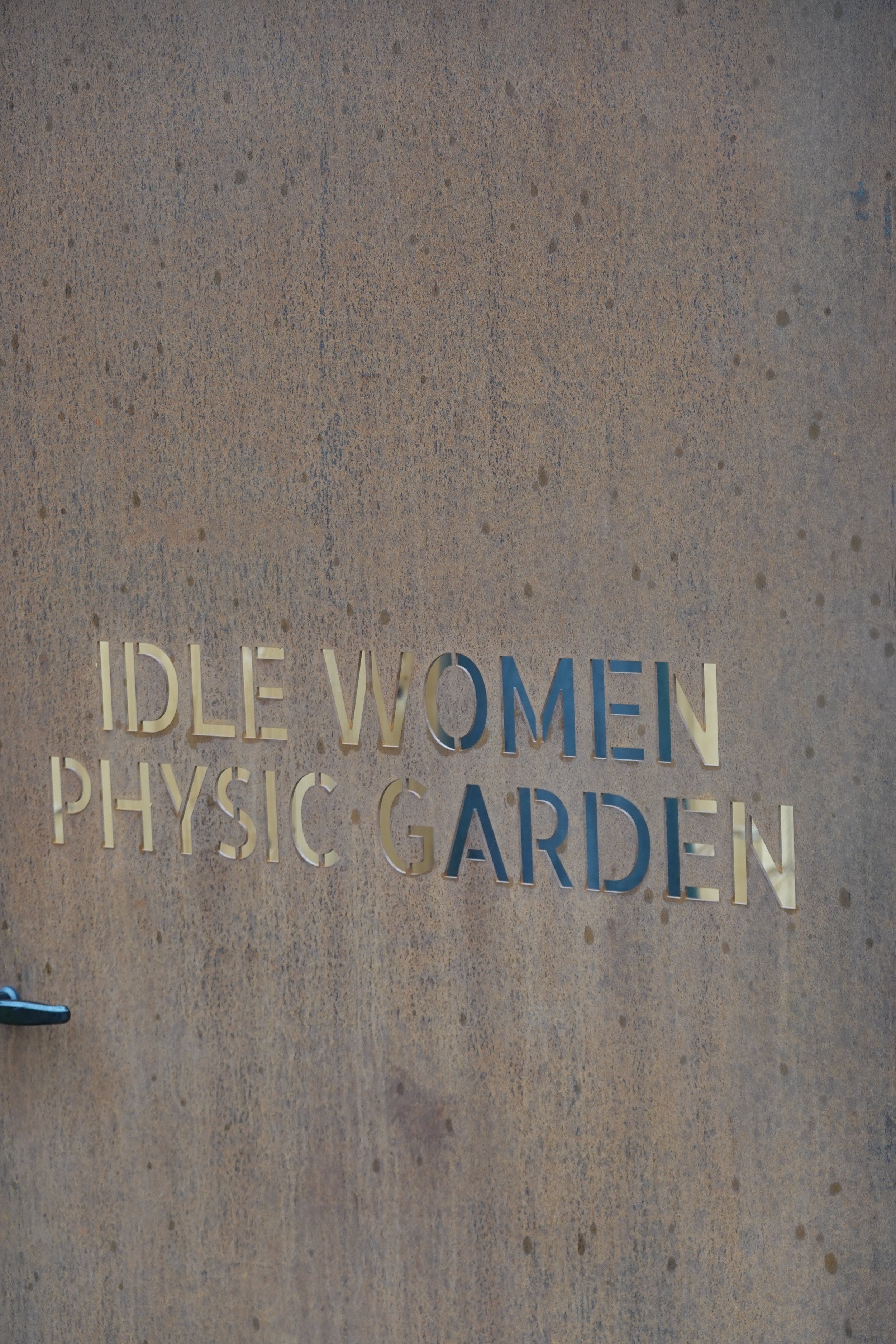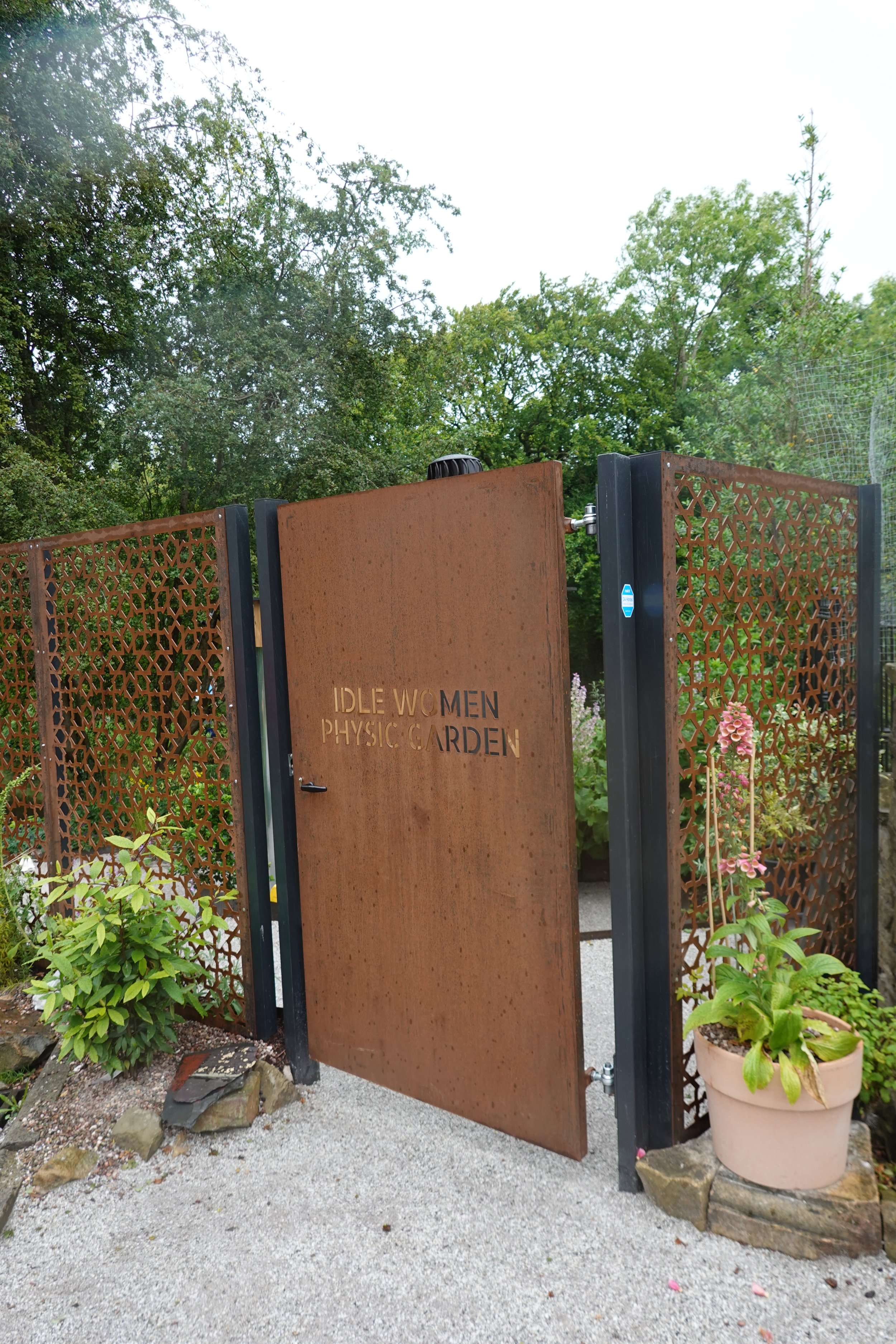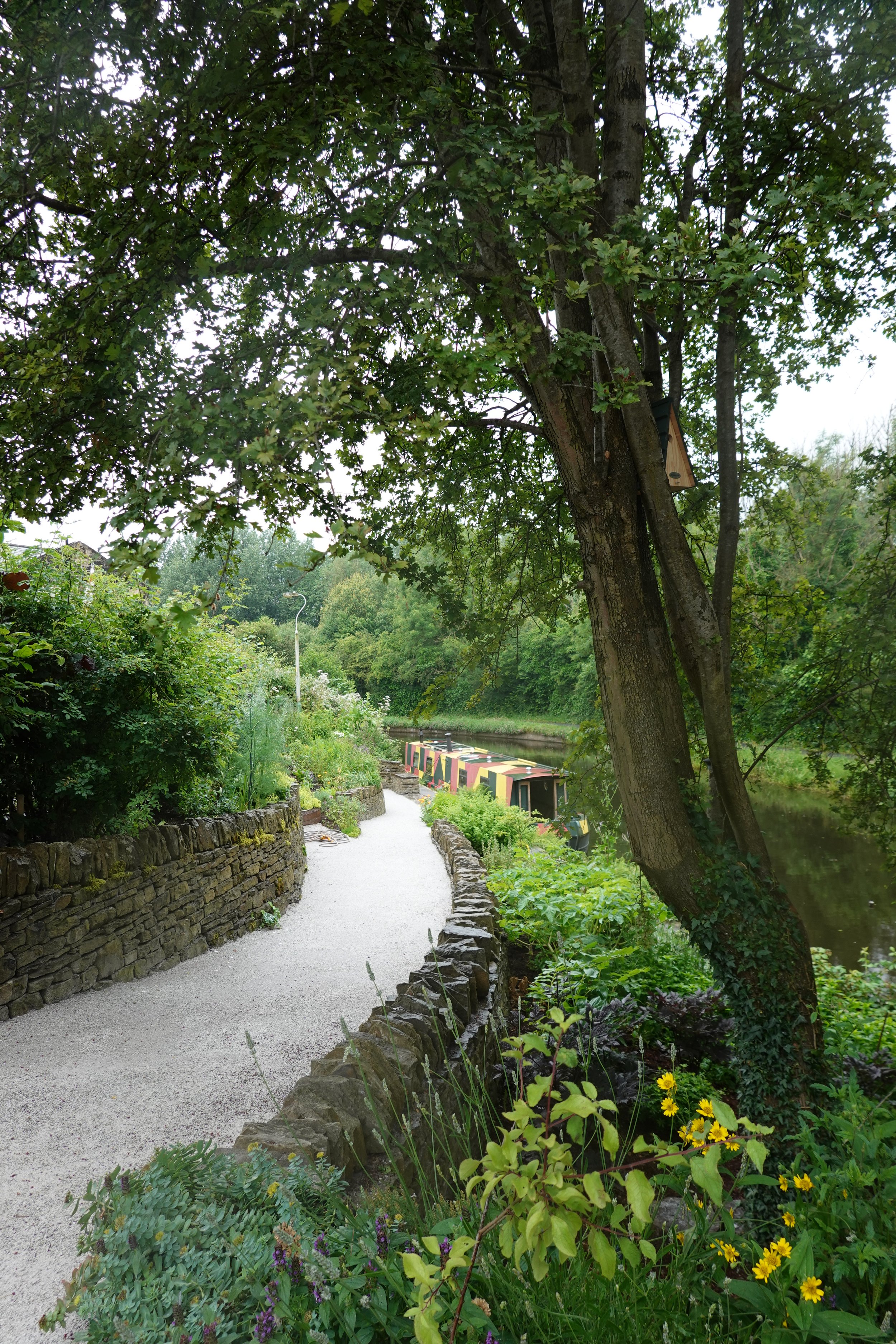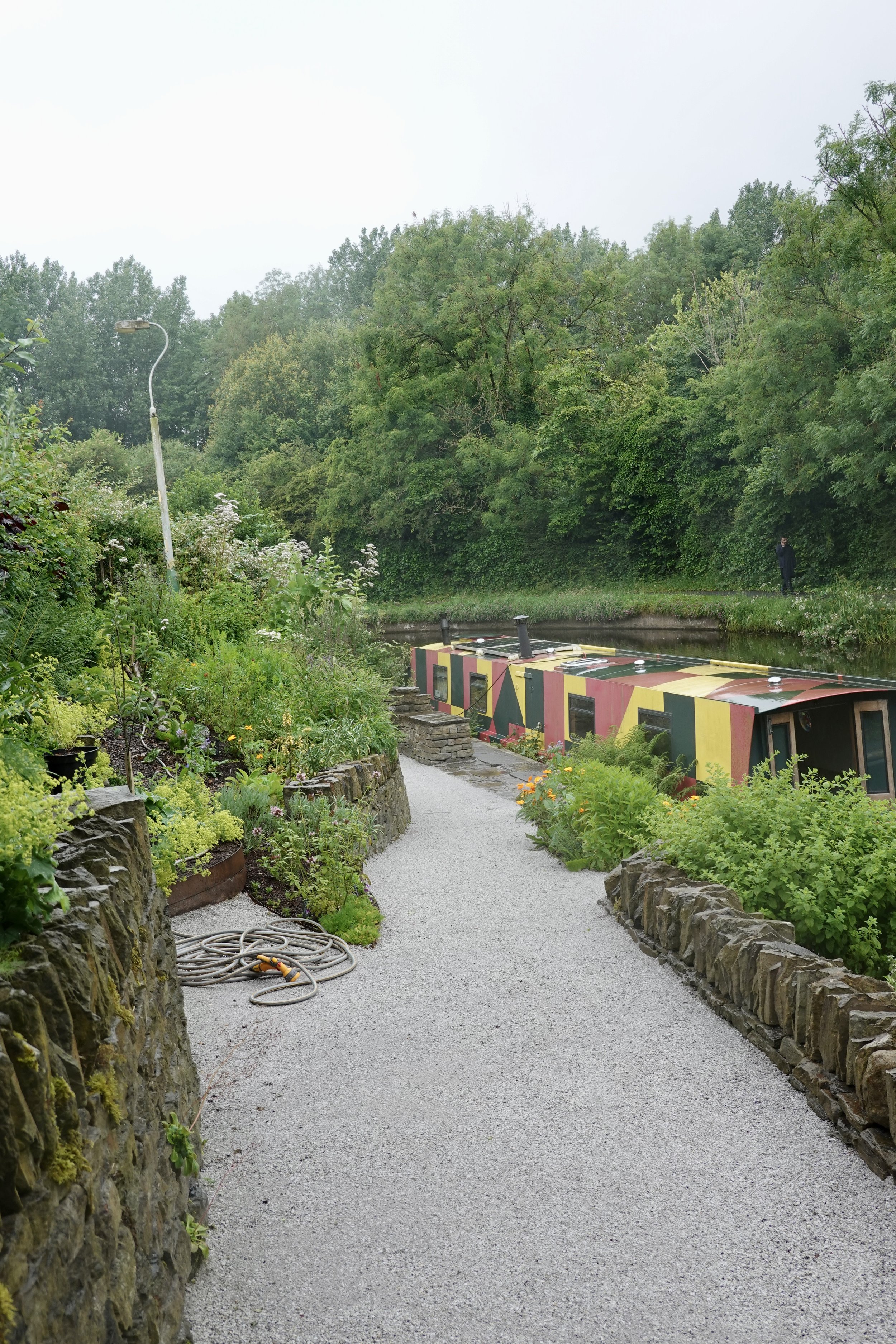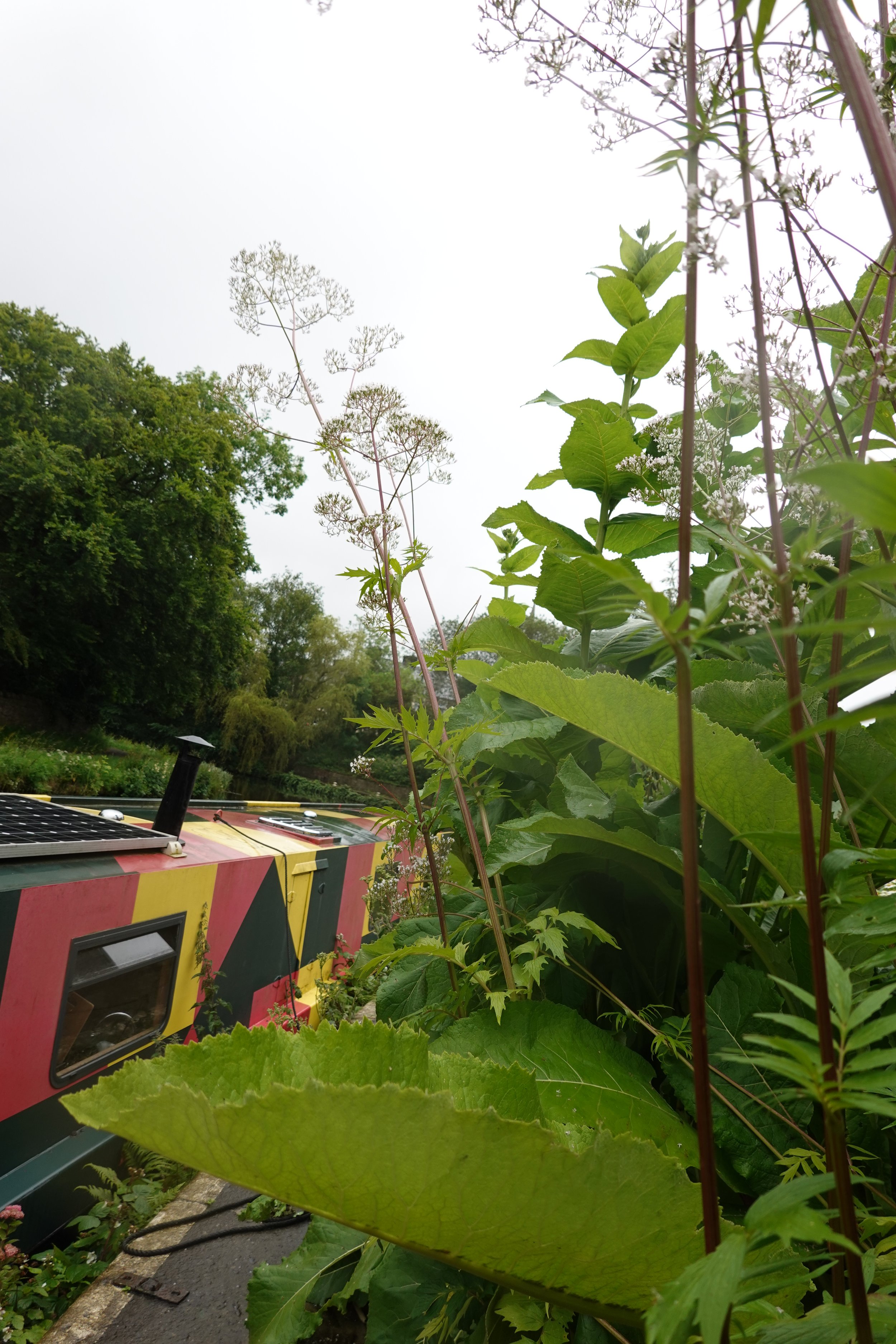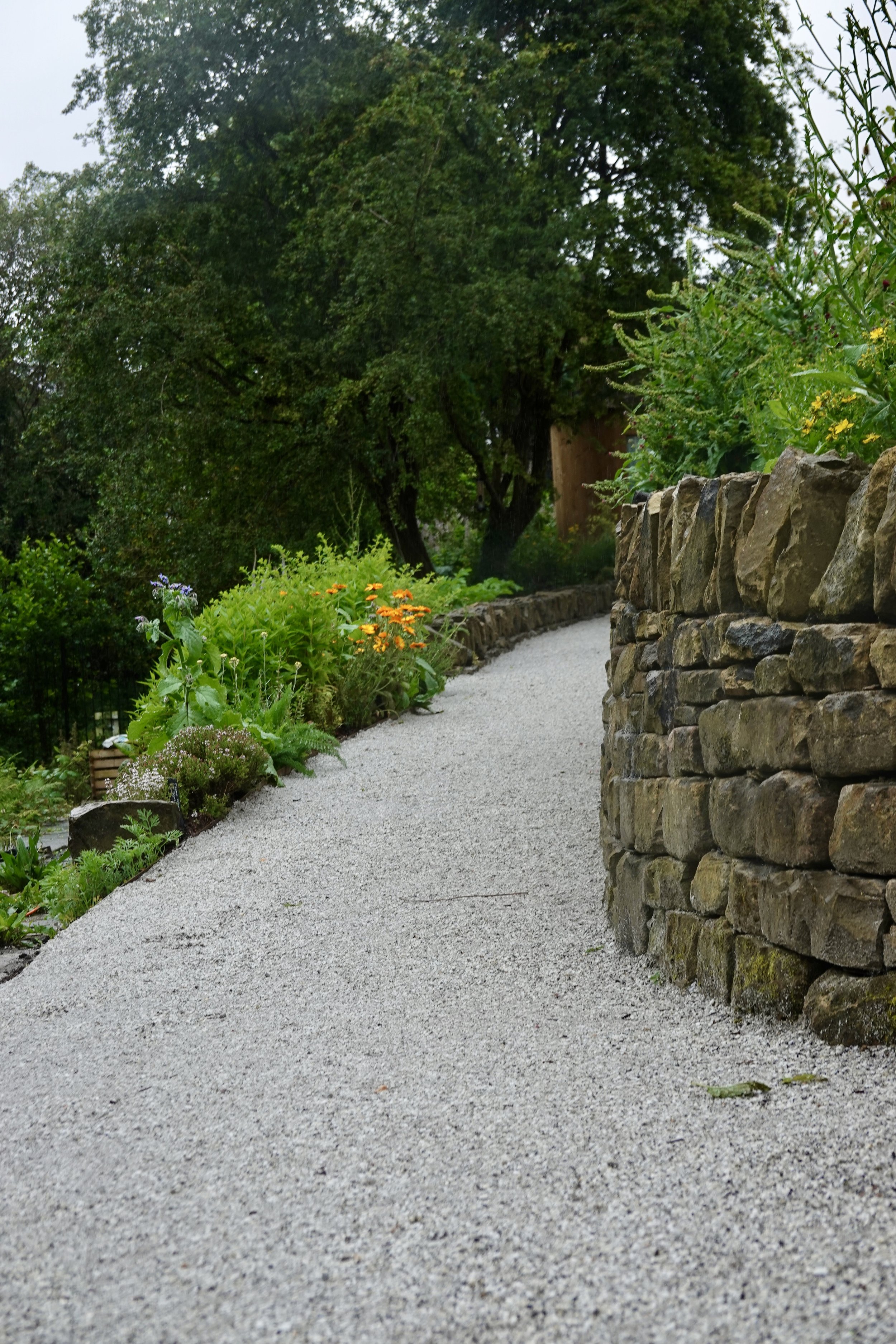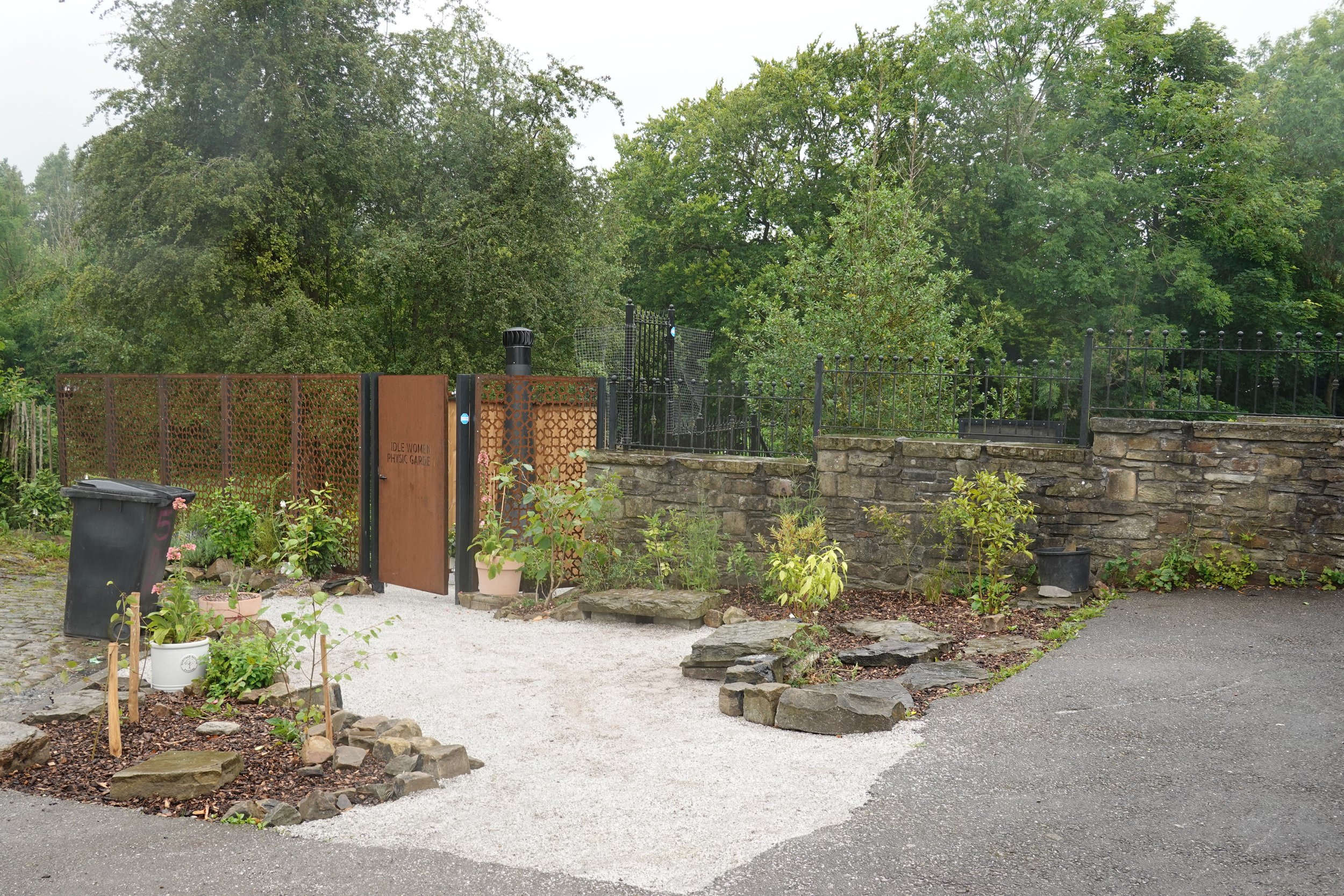
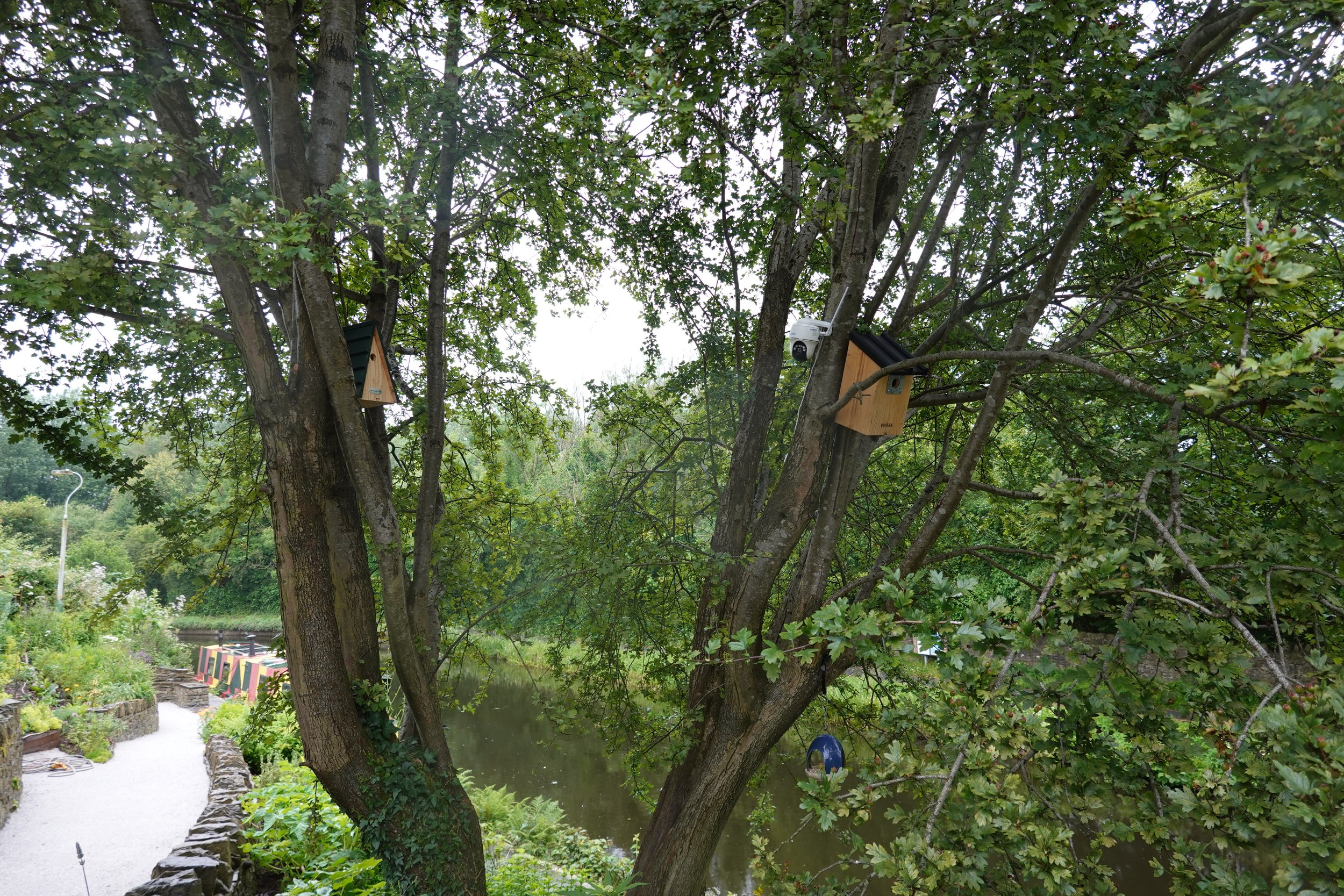
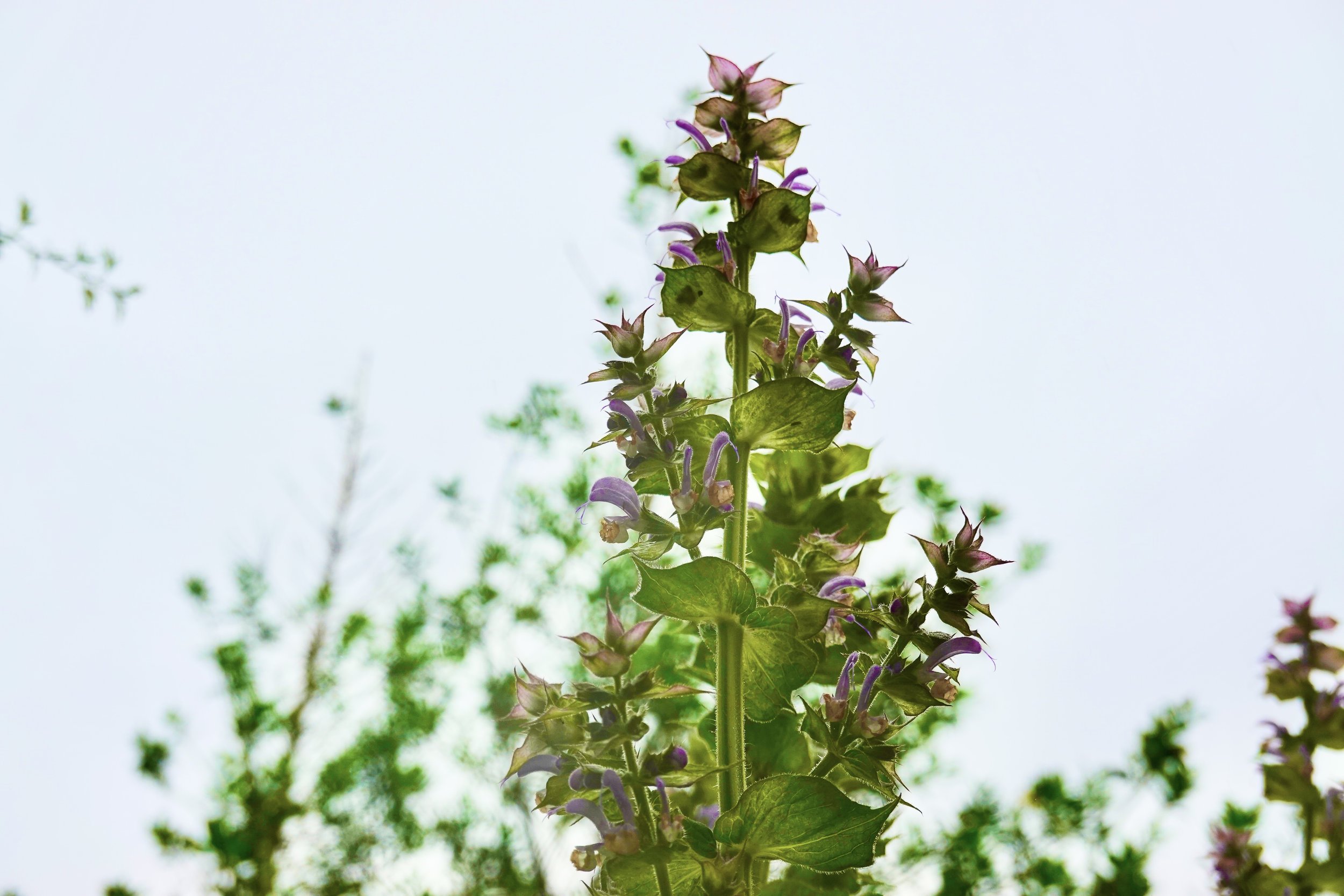

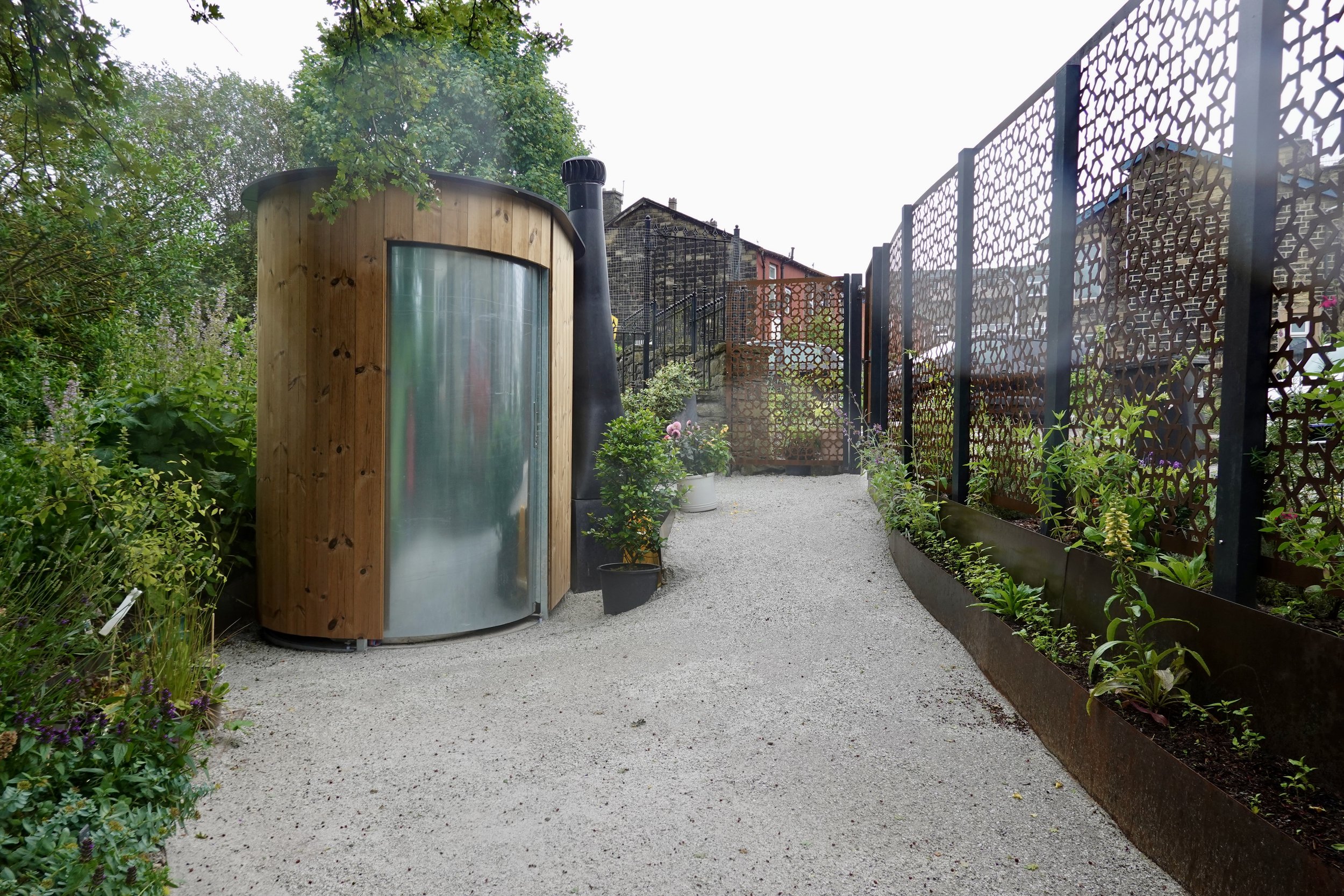

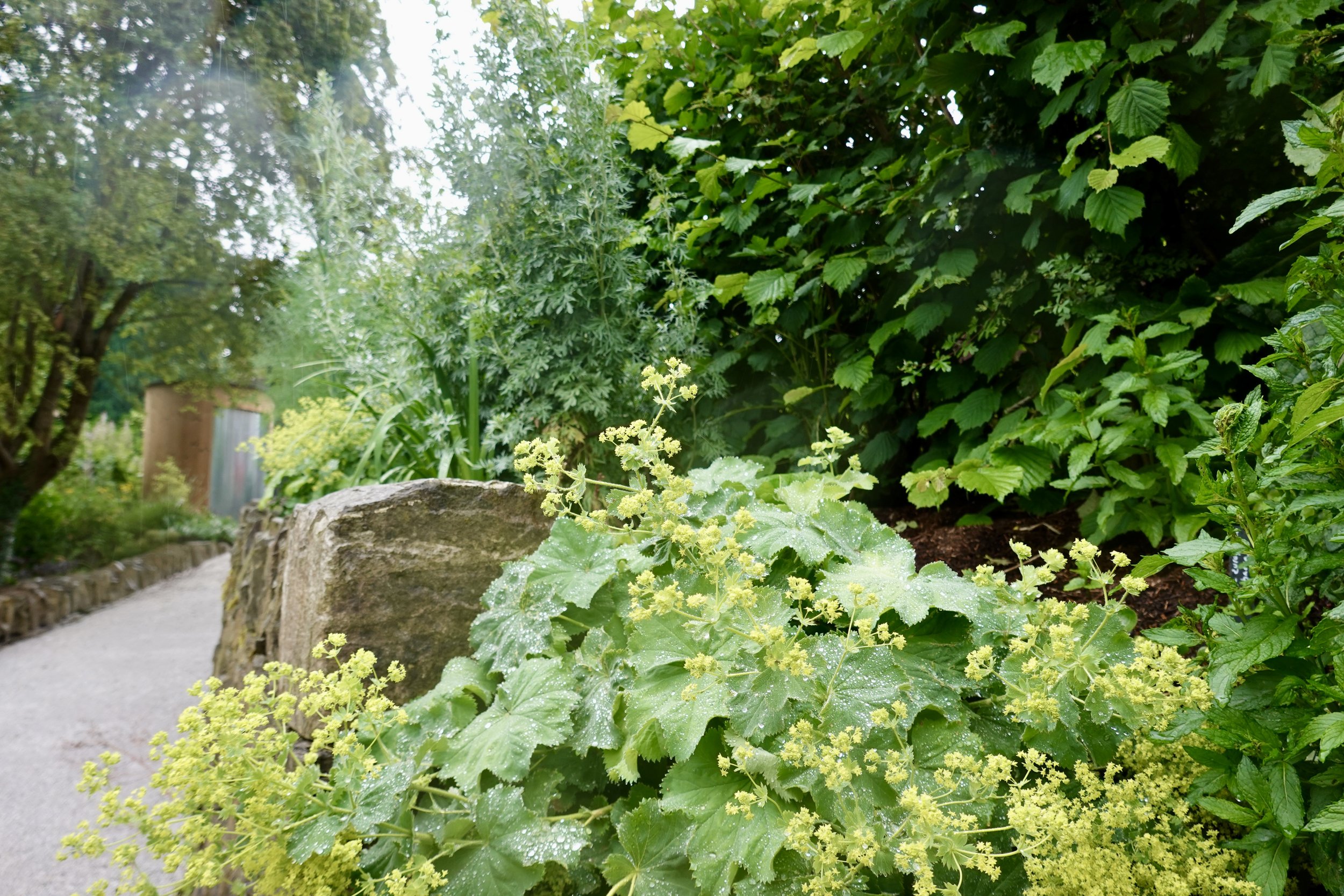
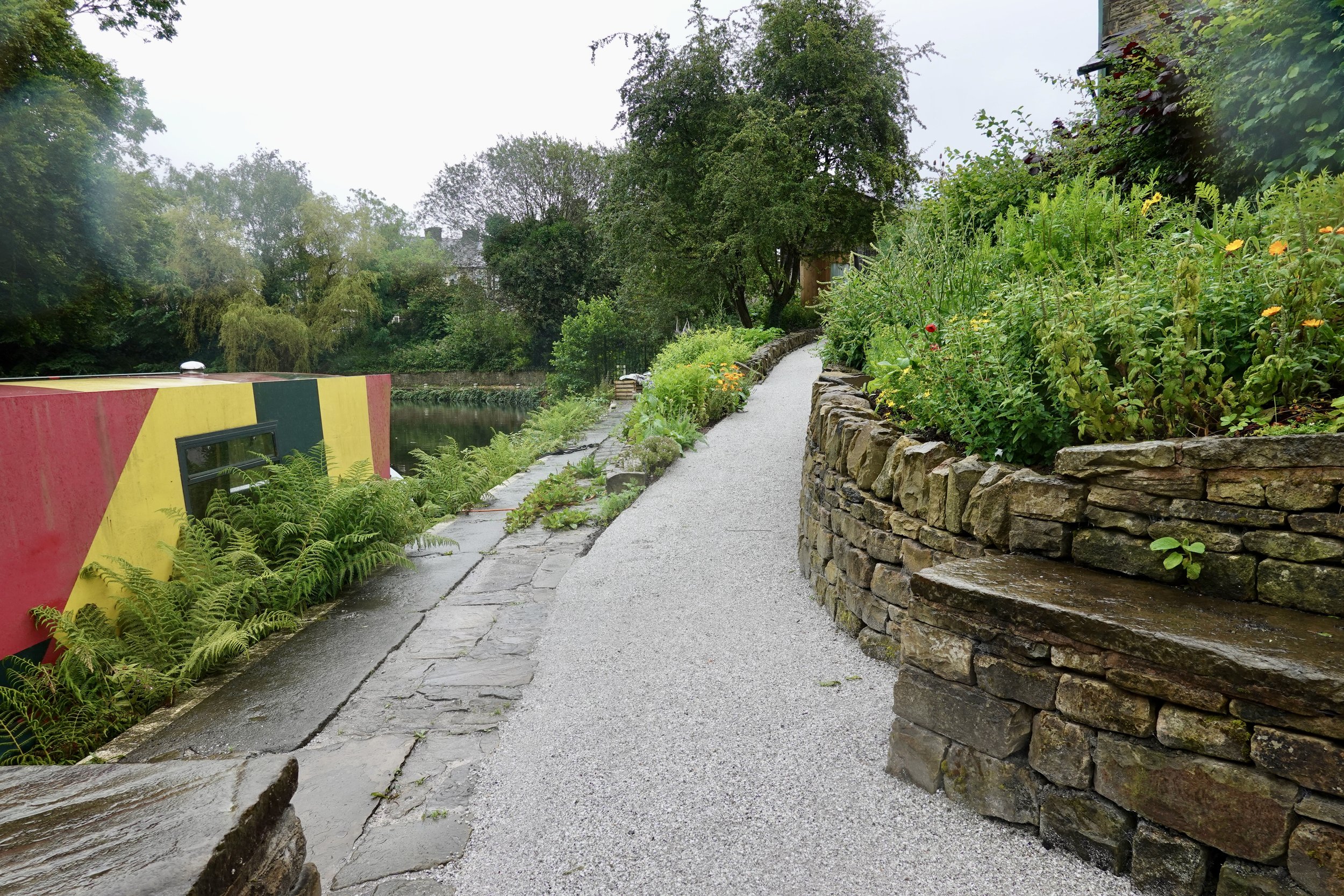
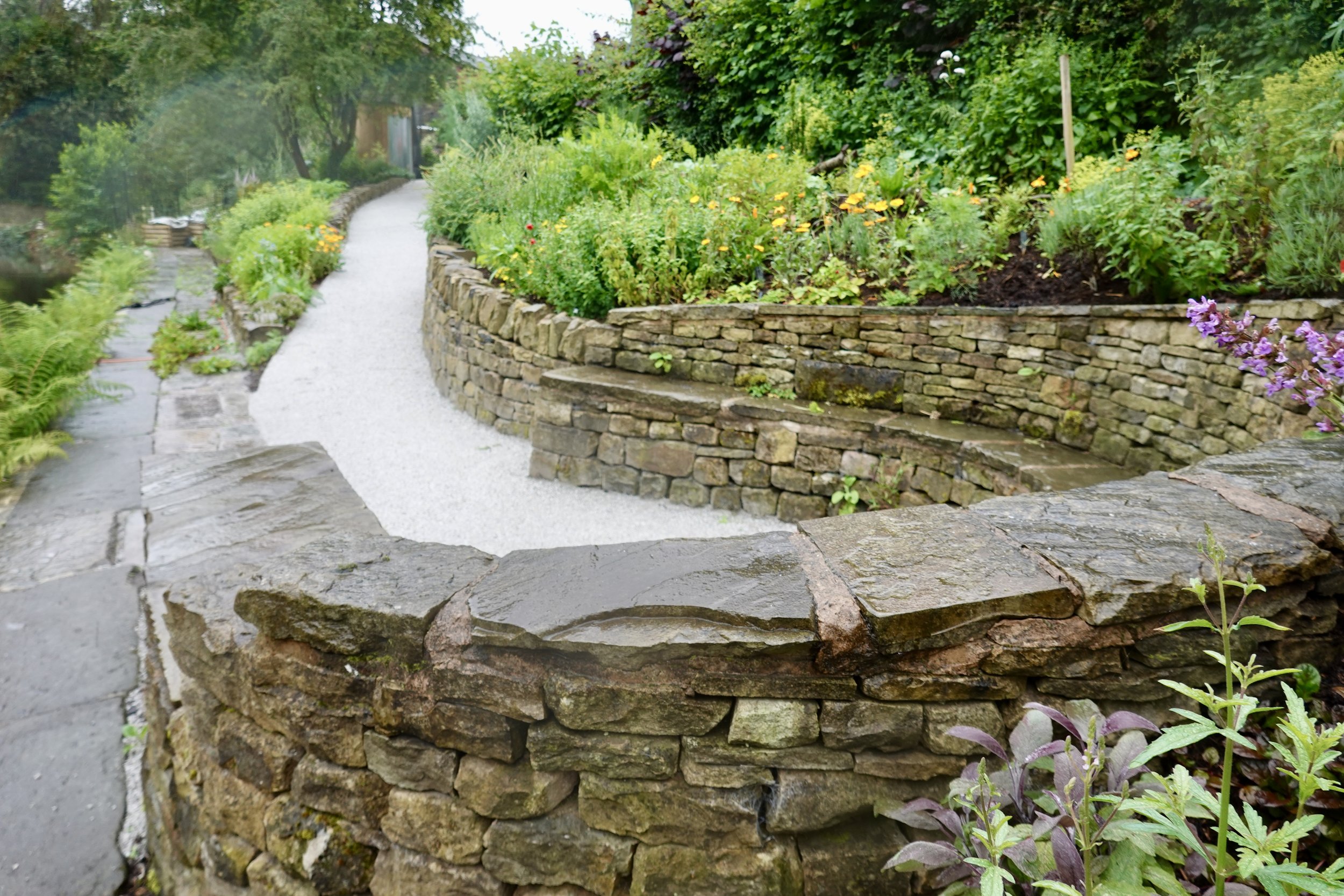
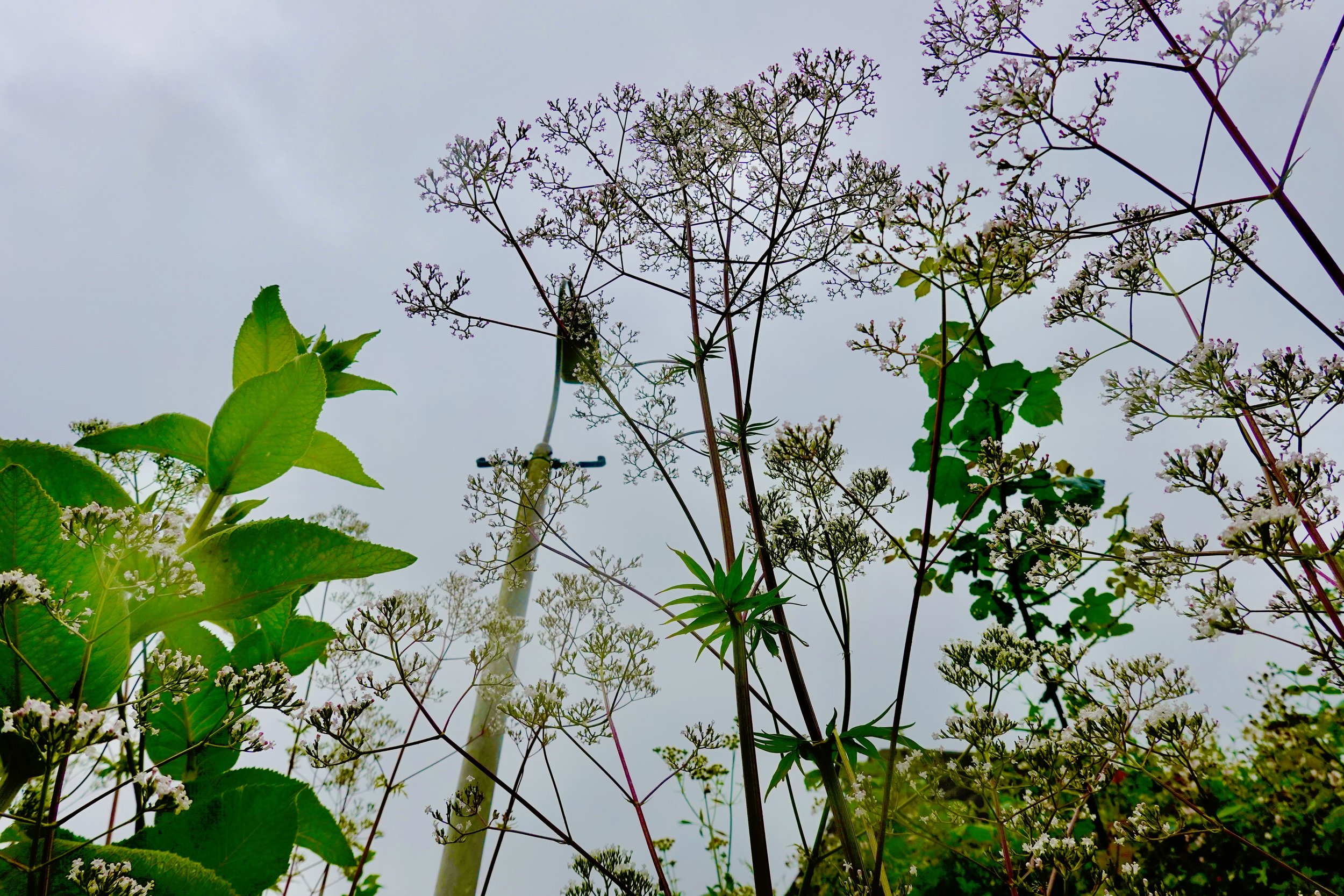
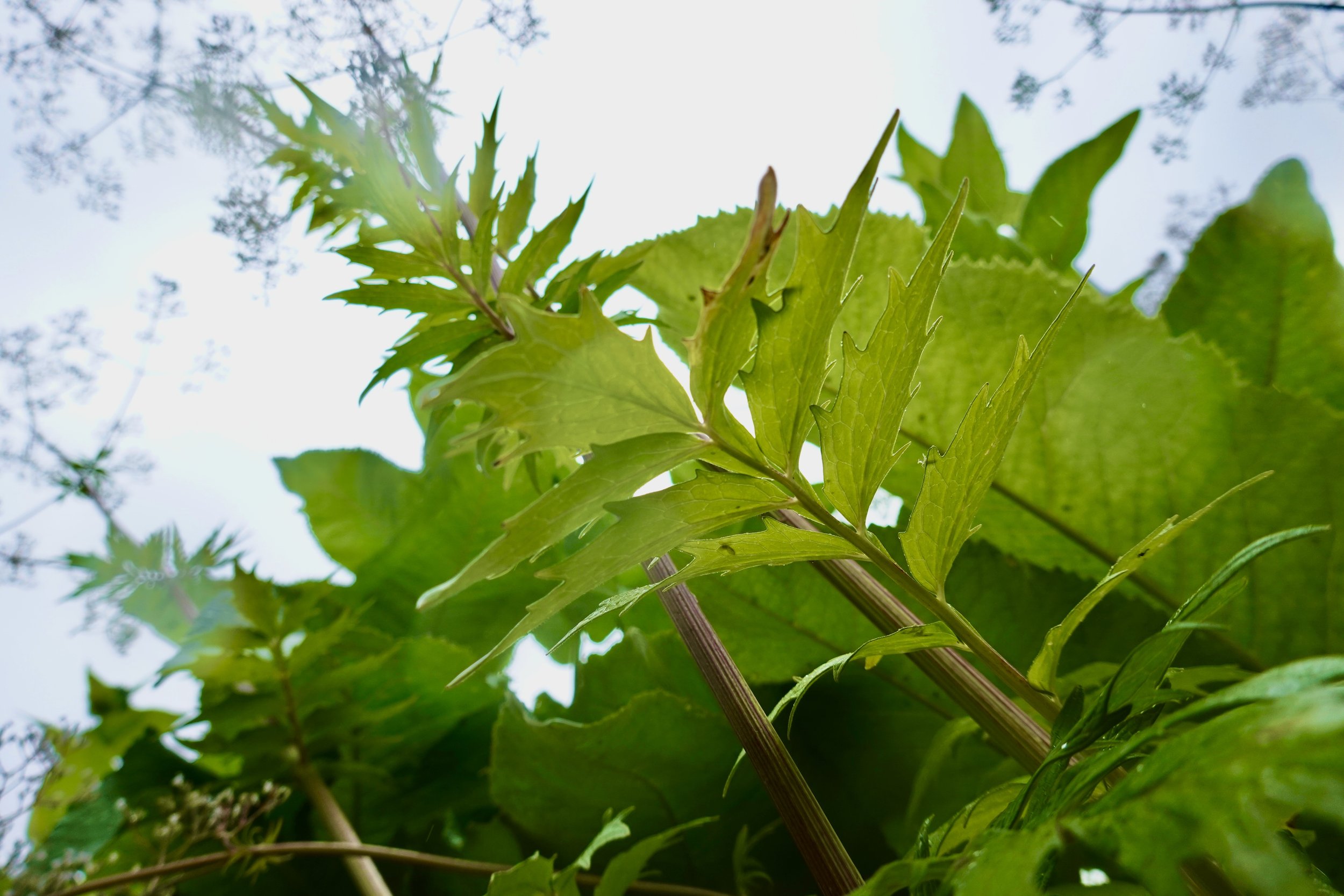
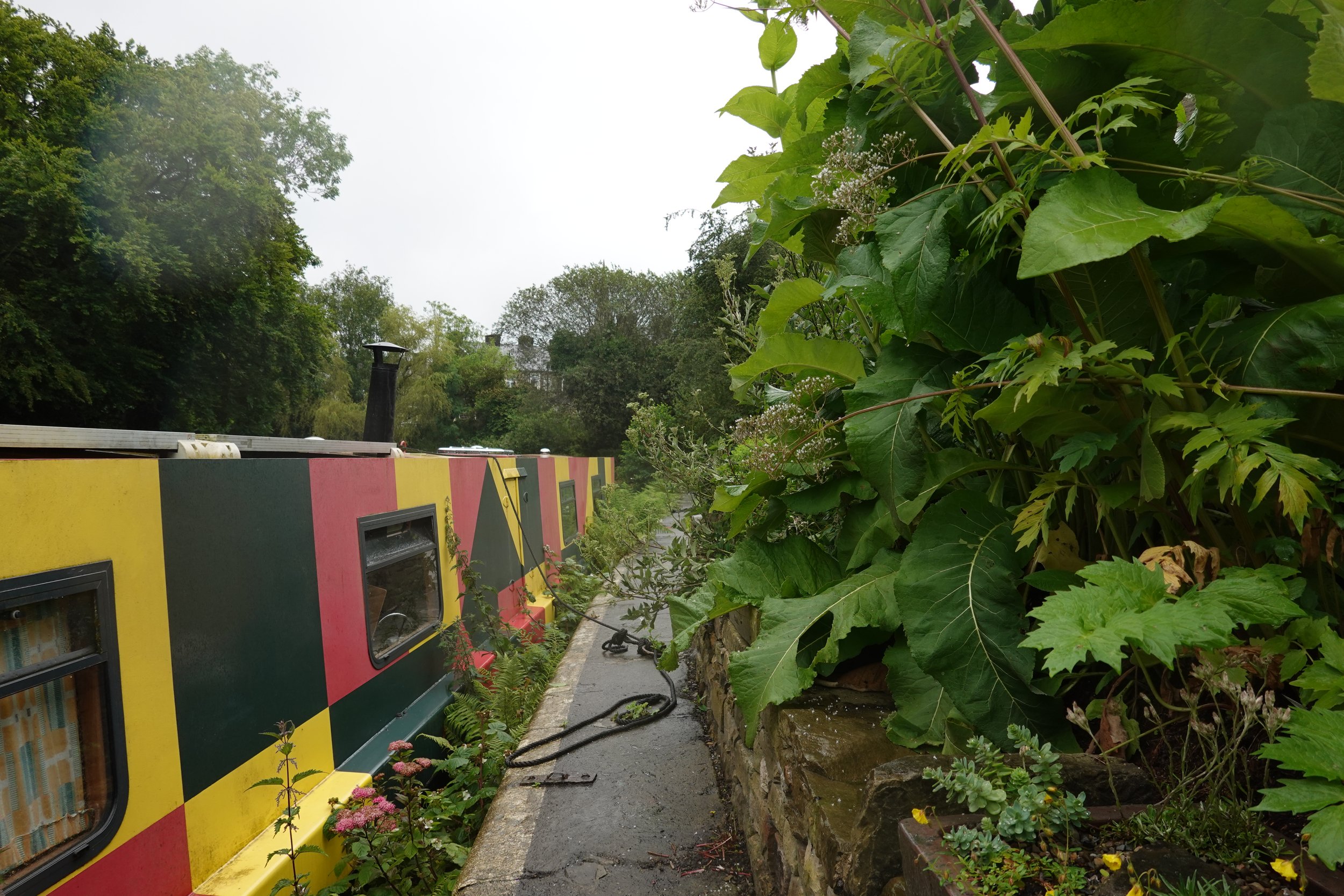
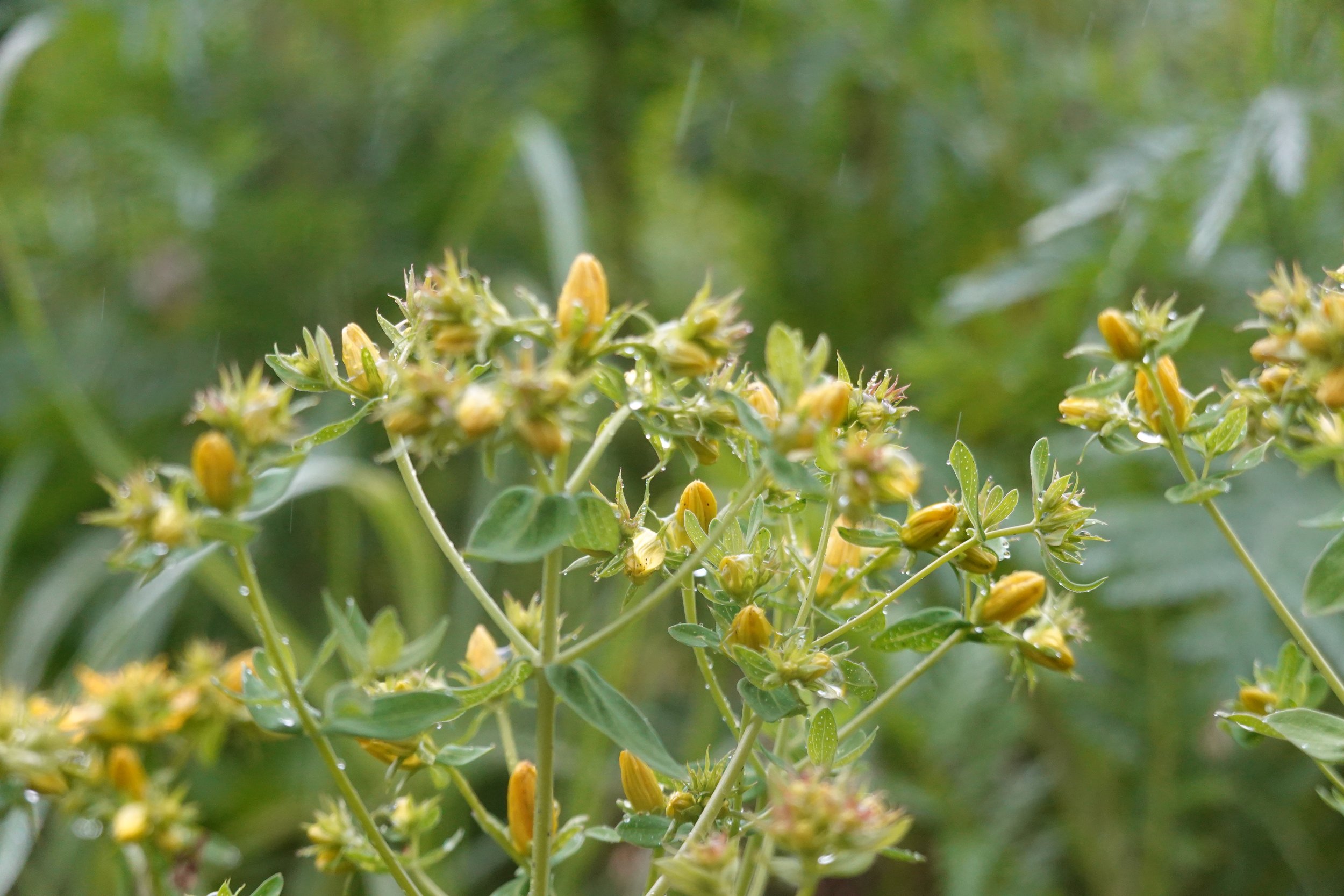

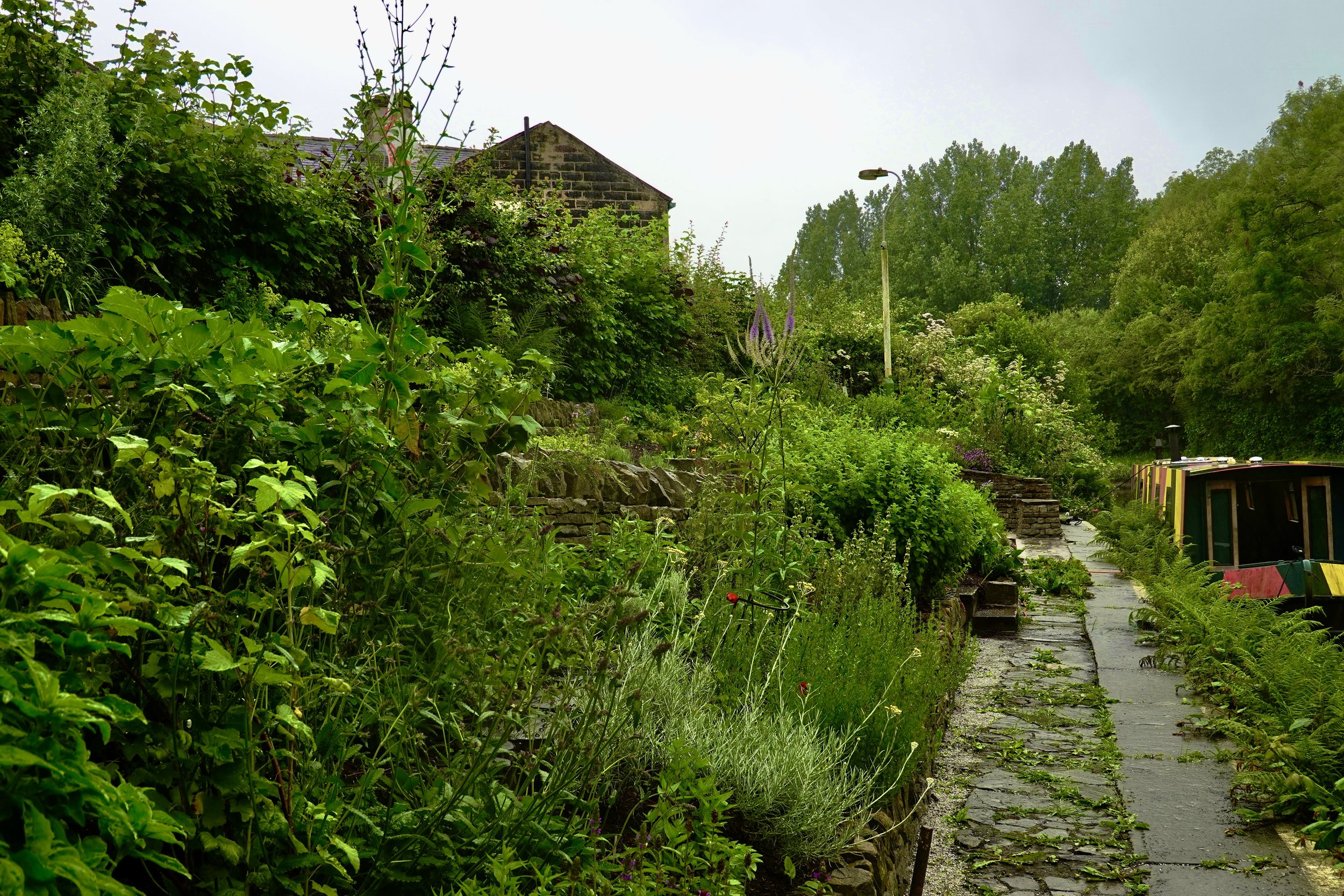
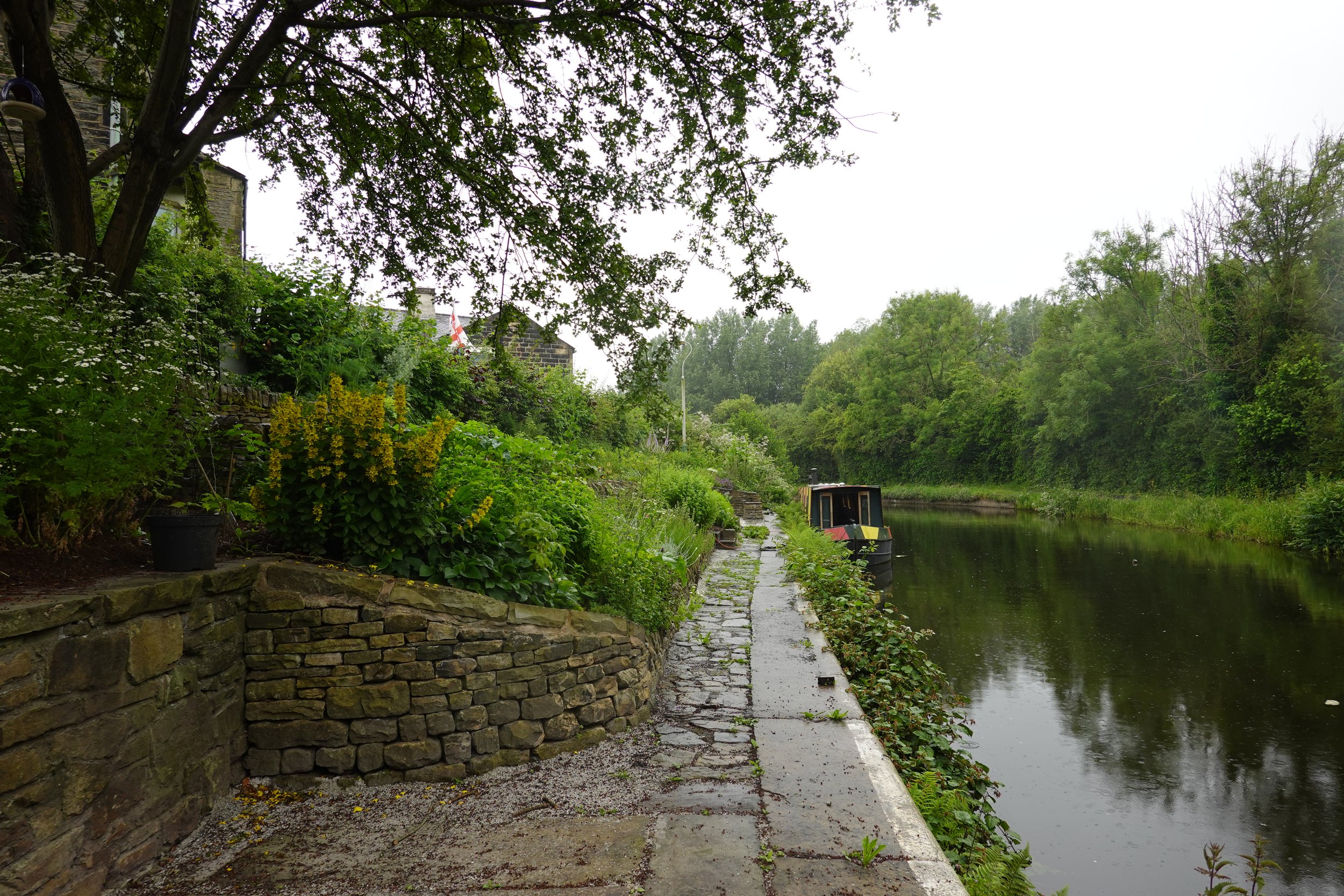
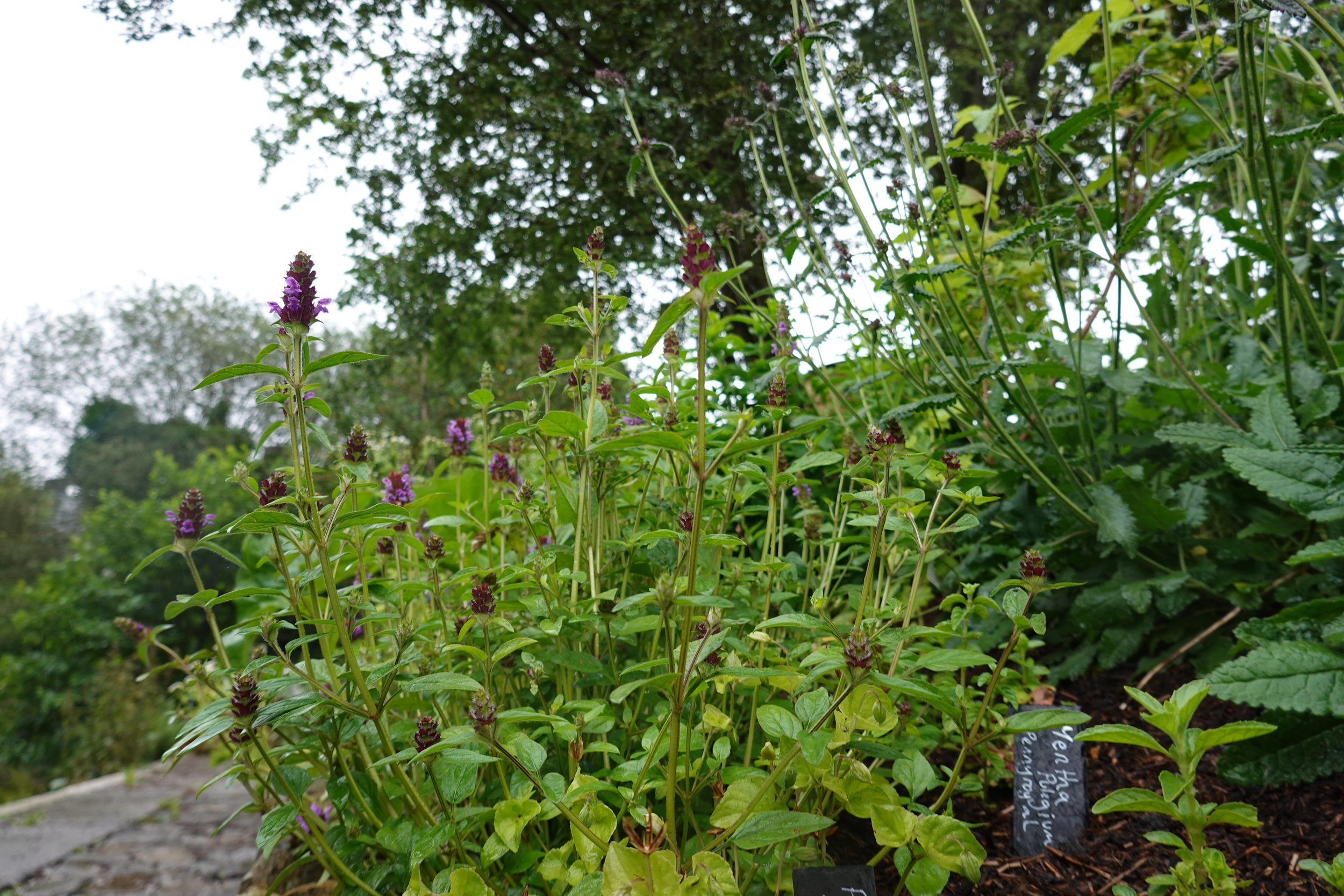
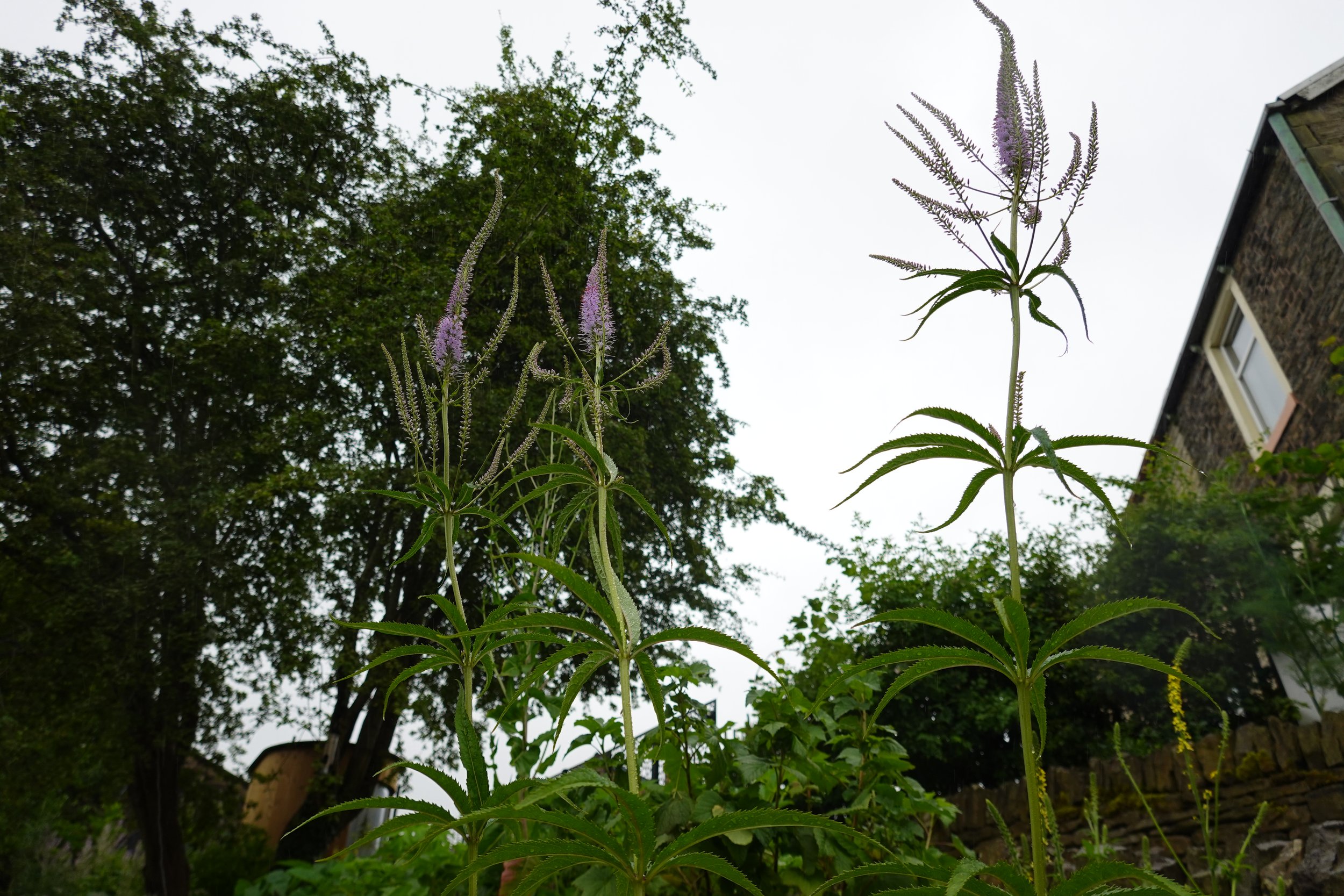
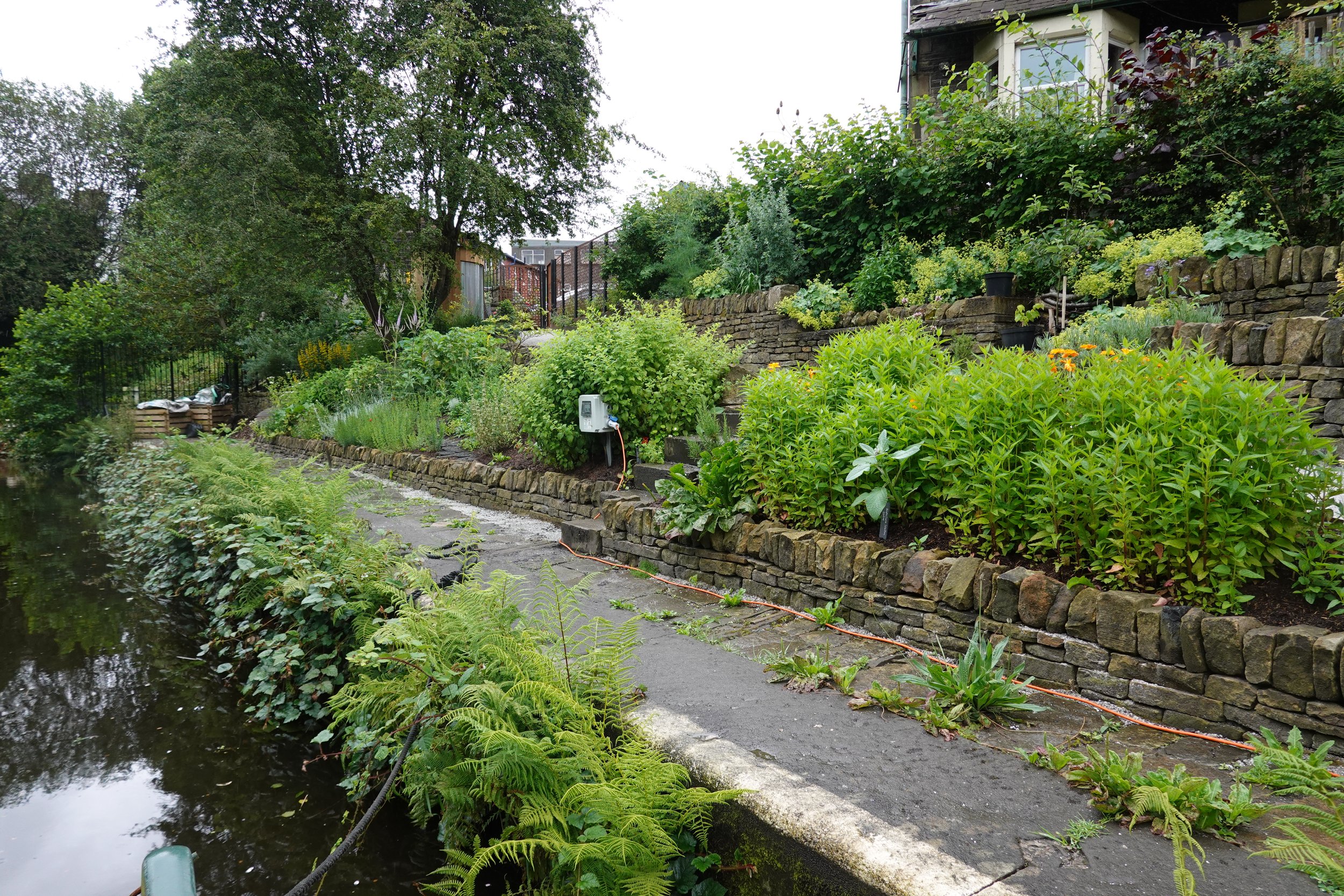


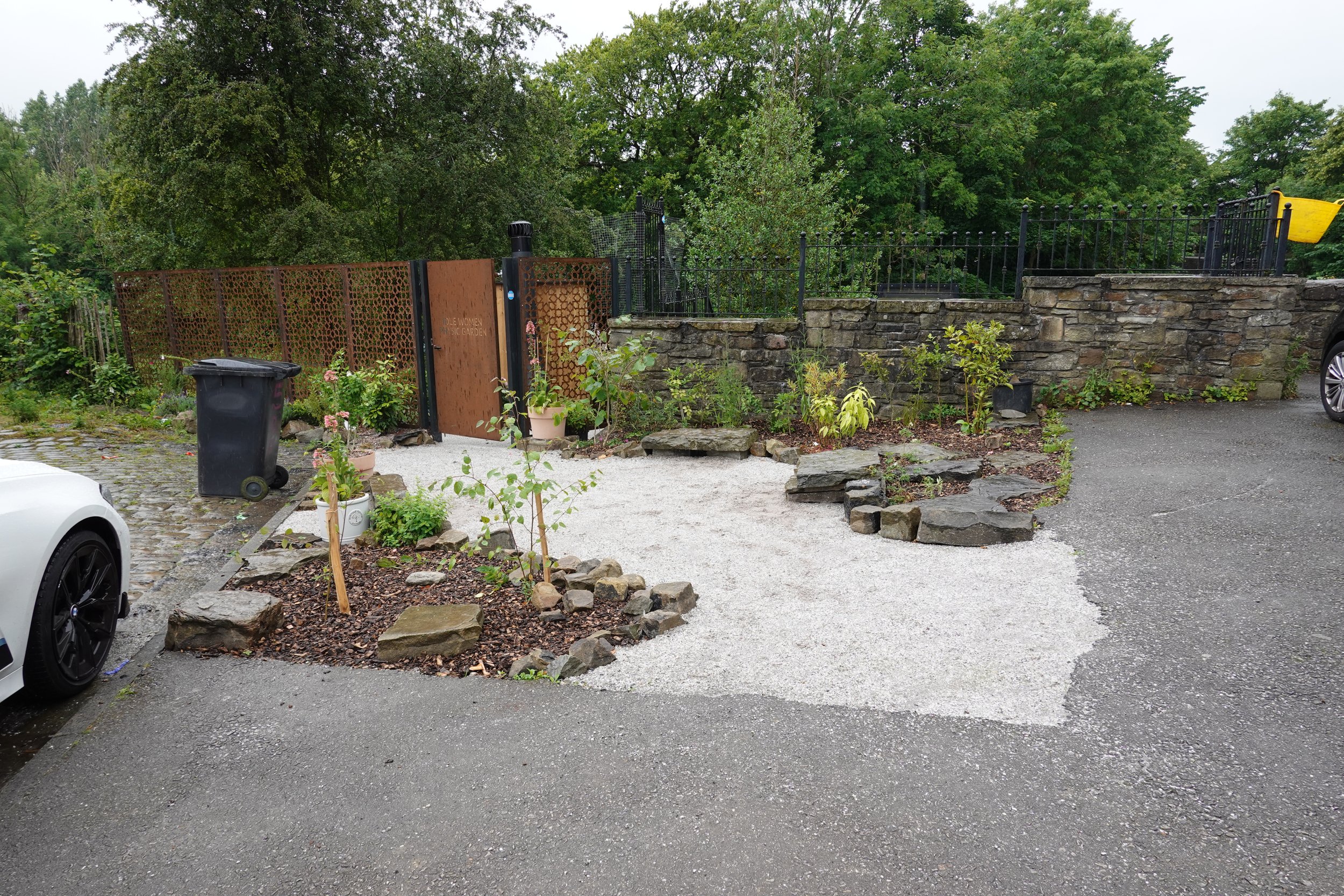
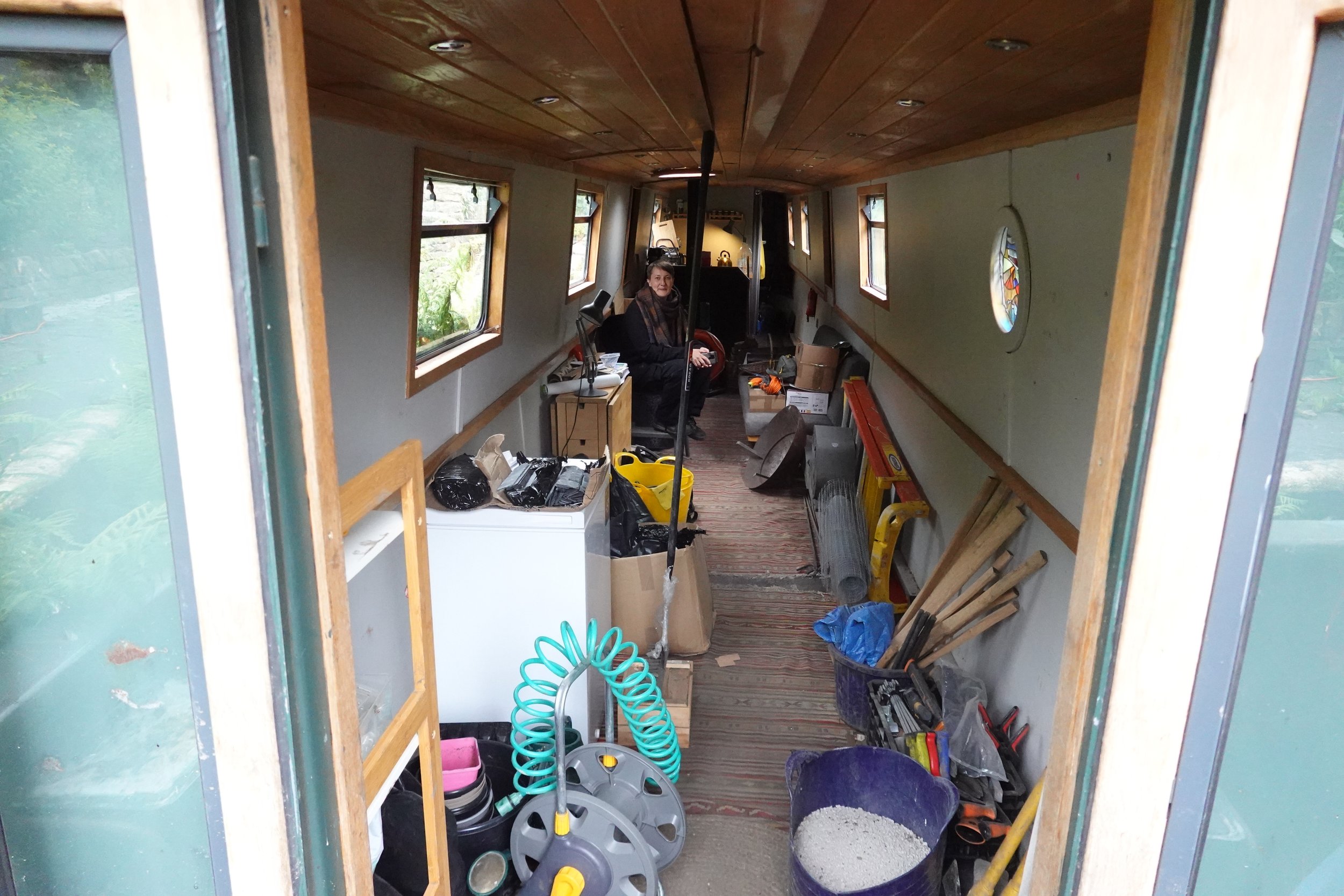

Rediscovering the Healing Power of Plants: A Journey to the Physic Garden
Throughout human history, art, gardens, and healing have been intricately connected, each influencing and enriching the other. Take, for example, the mesmerizing gardens of artists like Monet or Derek Jarman's cottage garden. Gertrude Jekyll, who viewed her garden as an artist masterpiece, seamlessly combined her extensive training in various arts and crafts into her horticultural designs. Across Europe and Asia, many kings commissioned artists to create gardens as living works of art. These spaces, blending nature and creativity, offer healing for the mind, body, and soul in unique ways.
Plants have always been the first place I look for healing, as they have been for countless women throughout history. It was this affinity that led me to discover The Physic Garden a garden of healing.
Located in the UK, this specific Physic Garden was created by female artists and creatives for women. It felt like destiny when I learned about it; living in the South, I had traveled North for family and found myself only an hour away during its soft launch week. Visiting this garden was a profound experience, not just for the artistic integration with nature, but for the deep-rooted connection to healing and self-care that it represents. These serene, contemplative spaces remind us, as women of our instinctual need to reconnect with nature, especially during times of stress.
The Physic Garden holds a special place for women to heal and reconnect with our ancestral roots. Situated near Pendle Hill, a historically significant area, this garden is steeped in the narratives of women's resilience and connection to the land. Silvia Federici, in her book Caliban and the Witch, explains how the witch hunts marked the beginning of capitalism, leading to the persecution of women and the severance of their lands and knowledge of the natural world. This garden stands as a testament to reclaiming that lost heritage.
Nestled behind the terraced rows of stone-built houses in the old cotton-weaving town of Nelson, Lancashire, the Idle Woman Physic Garden was instigated by the three main artists -Cis O'Boyle , Rachel Anderson andCharmian Griffin and it sits along the Leeds to Liverpool canal. An intentionally rusty trellised fence guards this tranquil haven, where each plant performs like a piece in a symphony of colour, fragrance, sound, and healing. Each plant is labeled with its common and Latin names, inviting visitors to explore and learn.
The Selina Cooper, a narrowboat created by the Idle Women group, is moored alongside this living work of art. Currently serving as a floating shed, it provides a space to rest, have tea, and store tools. The hope is for this narrowboat to become a hub supporting the garden and its visitors.
I went on a very wet day to visit the Garden, and I was warmly greeted by Rachel, one of the creative directors of Idle Woman the group that created this Physic Garden.
Over a much-needed cup of tea, we talked about the garden's inception and its significance in one of the most deprived areas in the country. Rachel explained the importance of the garden being independently owned, ensuring it can be passed down to other women without government interference and their sustainable approach promotes reciprocal working, valuing everyone's contributions.
We talked about the Physic Garden being a living work of art, a constant performance of interaction with its viewers, we talked about womanhood, the environment, and how the Physic Garden will become the connection or instigator of conversations, healing, and learning.
The garden's design is captivating, seamlessly blending wild plants with carefully curated spaces that rise along sloping banks held by Yorkshire stone. This stone, a poignant reminder of the land taken from the common people during the Industrial Revolution and the Enclosure Act of 1773, now serves to enclose the plants and define this sanctuary.
Each plant encourages visitors to immerse themselves within. The Physic Garden is safe haven for women to learn, relax, release, and engage within a supportive community. It stands as a beacon of creativity, echoing the resilience and nurturing spirit of women throughout history.
Rachel Anderson
Rachel is an artist and producer specialising in site-specific relational practice.
I also asked Rachel some questions via email, and this is her responce…
1- How does a physic garden connect to creativity?
Creativity is very broad but I suppose that the Physic Garden invites observation, question, reflection, learning, and a place to make connections that expand our way of understanding and broaden our ideas.
2 - What can an artist learn from the garden, in approach and ethos? And how did the collaborations work when creating this garden?
I think one of the most frustrating pressures on artists today, especially those who work collaboratively or relationally, is the time restrictions that are placed on us. The limits we are expected to work with in terms of funds and pressure to create outcomes can be stifling, we are forced to present ideas that haven't had time to develop and make short transactional relationships in communities that don't serve anyone adequately. I think this leads to compromised quality both in terms of process and outcome and I think artists need to stand up to this pressure together.
We’ve worked on the Physic Garden for seven years and the research for it began much further back.
We resisted the pressure to rush and to cut it short and fought hard to go at a pace that suited the process - it wasn't easy but one of the things that helped make it possible was to own the resources and work as independently as possible, crowdfunding and using earned income that didn't give us time restrictions - We did a lot of work with our community on the ideas that formed the Physic Garden through shorter projects over several years that all built towards the site in Nelson - such as creating the Physic Garden Network which in itself is many projects which include a workshop process for a year with 100 women during lockdowns who met by WhatsApp every week, the plant introduction films made with Annis Joslin, Mara Baughman and Babita Mudra and the net art- full moon commissions.
The relationships and collaborations that created the Physic Garden began in 2015 so to go into the ways the collaborations have been integral.
3. -In your opinion would you call a physic garden an art or a science or both and why?
Our Physic Garden is an artwork, we might call it an artist garden if that’s helpful. We understand it as a live sculpture and a performance, a living archive that is animated by women.
For us the fact that it is a garden is arbitrary - in the same way that the narrowboat we built - Selina Cooper is arbitrary. These are vessels that we create to hold possibilities.
Physic Gardens more broadly have gone from being commonplace in medieval times to being quite few now - I think of these rare sites today as gardens that are perhaps situated within science or even museums.
I suppose the differentiation is in the intent but also the materiality and the ways something is created and by whom. Cis and I conceived and built the garden. Our backgrounds are in Fine Art, Theatre making, and public site-specific art so the ways we have created the Physic Garden align with our practice and our life's work.
4 - The Idle Woman volunteers came together in a similar way Haus a rest did for artists. To stay connected during the pandemic. What are your thoughts as to why when women get together outside of the establishment things just seem to work and fall into place naturally?
I think that to co-operate and co-create is a natural state and that shared purpose and making something happen together makes us feel fantastic. It is hopeful, empowering and expansive. This does happen most effectively outside of the establishment, perhaps - from a woman's perspective - that's because many of the established systems, the rules, the structures and the institutions we navigate are patriarchal in their foundations, they wrestle with us and hold us back or trip us up so that we get exhausted, frightened and defeated,.
Idle Women’s work has been inspired by our friendship with Sylvia Federici who wrote Caliban and the Witch. Through her work, we see clearly how society was restructured away from the commons, from female friendship and shared labour into capitalist patriarchy which stands against collective solidarity. Her work and learning our history help us understand why we can feel afraid to step out of the status quo.
Another writer who helps us to articulate a different way of working together is Robin Wall-Kimmerer, in her book Braiding Sweetgrass she talks about the gift economy - we are interested in the responsibility of gifts and relationships rather than more dominant definitions of volunteering as unpaid labour that the establishment profits from.
We pay every woman who we invite to work on projects and our groups and workshops are free but operate on principles of gift economy.
5 - How might austerity cuts in the UK have contributed to a greater need for spaces like those created by Idle Women?
The Government austerity cuts forced councils to close swathes of resources - libraries, bus routes, accessible services, specialist women's health centres, adult education courses, public toilets, women's centres, children's play and youth services, domestic violence refuges, mental health support initiatives, community centres and so on.
In response, we pledged to use the resources and possibilities that being artists affords us to create spaces that can never be cut, closed or taken away. This is what women did who opened the first safe houses and we follow many women who have used what they had available to them to make change.
6 - In what ways can art and social justice collaborations, such as Idle Women, address systemic issues faced by marginalized communities? And what type of projects have been or could be developed within the Physic Garden to foster creativity and collaboration among women?
The women who make up Idle Women all come from the margins, we share experiences of intersecting violence and oppression and we also recognise that the margins are essential. We know that the problems created by the dominant mono-powers of this word will never be solved by those who caused them. At this moment of crisis the world needs the people in the margins who have a diversity of experience, the global majority.
The Physic Garden is a space dependent on diversity and cooperation, we plan to hold it loosely and eventually put it down, it will be up to women to caretake and animate it. We will start this with some invited residencies, the first of which will be digital so that we ensure that women who can't come to the garden are still in it. From Autumn it will be the base for developing our next major project Petrichor - A Case for Land which is a long-term site-specific performance.
7 - How might the psychological impact of having a safe, communal outdoor space differ from traditional forms of therapy or support for women facing difficulties?
The Physic Garden wasn't created to replace or promise therapy or support but it could play a role in a woman who is navigating her way through recovery - perhaps by offering purpose, learning, friendship, or encouragement.
Women-only spaces are powerful - stepping into them can feel like removing a heavy burden of armour that we don't even realise we carry, putting this weight down allows us a different perspective which can be transformative.
But the Physic Garden, although privately owned, is in the public realm, it can be observed and violated as all public space can. Through our narrowboat touring project, we learned that safety is a momentary, powerful but depressingly temporary respite.
8 - How do you envision the long-term impact of the Physic Garden Network on the broader community of women it aims to support?
I think we responded to what we all needed at the time we set up the Physic Garden Network in the pandemic - we needed to connect with something outside of our day-to-day and not feel alone, what we got was much more than that. Long-term - perhaps we each instilled in ourselves the value of taking part and finding others who like us need something that can only be made possible by us.
9 -in what ways can collaborative efforts between artists, designers, and gardeners enhance the creation and sustainability of community projects like the Physic Garden?
By working collaboratively / cross-sector we bring together a range of diverse expertise and can learn from one another - we exchange languages, skills, and methodologies and create something bigger than the sum of our parts.
I think that art has always drawn on cross-sector skills - Who built the scaffolding so that the Sistine Chapel could be painted? The arts don’t fairly acknowledge the extent to which collaboration lies behind all work that is made and that is a terrible disservice.
10 -How does the metaphor of the garden as a “young green shoot” emerging from an “underground network of intertwining roots” reflect the mission and growth of Idle Women?
This sentence talks about the complexity of ideas, influences and connections that inform our projects - and the essential, unseen, overlooked foundations of women’s work globally that we all depend on.
Anyone who has ever tried to remove nettles by pulling the shoots will understand the importance of intertwining underground roots.
Cis O'Boyle
Cis is a collaborative artist who works closely with ecologies to transform space and realise narratives that are both accessible and meaningful.
Charmian Griffin
Charmian creates and produces web projects with artists and visual arts organisations.
Rachel Anderson
Rachel is an artist and producer specialising in site-specific relational practice.


